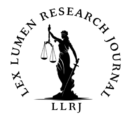Written By Akshoy Kumar Das Chakravorty,
Advocate, Sibsagar Bar Association, Asssam
January 2025
This Blog seeks to give a discussion of some of the legal obstacles and opportunities that AI has posed for India. The Blog reviews the existing effective law, the Information Technology Act 2000, and the draft Bill on personal data protection of 2019, along with regulatory loopholes related to data privacy, accountability, and ethics of AI. It further sets out the implications of AI in healthcare, education, finance, and policing domains and offers recommendations to overcome infrastructural, regulatory, and employability hurdles. The guiding spirit of this Blog is, however, to find a middle ground between incursions in AI, on the one hand, and fairness, transparency, and inclusiveness, on the other.
Keywords: Artificial Intelligence, Legal Challenges, Data Privacy, AI Ethics, Regulatory Frameworks
Artificial Intelligence and India’s Legal Challenges:
A Future Outlook
- Introduction
Artificial intelligence is that kind of technology which gives a replica of human intelligence in machines. It simply means the collection of data, thinking, and inferences. With such advancements in technology such as machine learning, natural language processing, robotics, and deep learning, one can say that artificial intelligence these days is gradually catching up with other industries in India. This paper analyses the whole scenario of AI in India in recent trends.
- Research Methodology
An analytical-qualitative legal analysis reviewed the artificial intelligence policy in India concerning finding voids or loopholes and accordingly providing possible suggestions. Analysis was done on the various laws and Government Institutions of India.
- The Role of AI and Its Impact
- Healthcare: It is being said that AI would work as a game changer for diagnosing and treating patients in rural areas, yet concrete rules regarding data protection and informed consent through records remain to be drafted.
- Education: AI is likely to open doors toward customized learning plans; however, an uneven layering of an unjust access foundation alongside bias materializes shall produce an even wider digital divide.
- Finance: AI propels systems toward the offering of banking services; however, the emergence of algorithmic bias toward discrimination in support of others appears to culminate in support of claims of discrimination.
- Law Enforcement: AI tools are slowly creeping into the structure of law enforcement; especially, in predictive policing and facial recognition; however, this raises a plethora of privacy and discrimination questions.
- Legal Frameworks and Government Institutions
- Information Technology Act, 2000: Discusses issues such as cybercrime, data protection, as well as electronic signatures. It remains very vague about the issues surrounding AI algorithm liability, culpability, and ethics on a broader scale when it comes to AI.
- Personal Data Protection Bill, 2019: Neighbourhood Principles concerning data processing under AI applications are mentioned; however, very little light is shed on how a good frame is built for dealing with ethical as well as regulatory questions raised by independent AI systems that would be thrown into scenarios for provision of AI adoption in India.
- Information Technology (Reasonable Security Practices) Rules, 2011: The rules deal with protecting sensitive personal data and therefore serve as guidelines for the adoption of reasonable security practices by organizations.
- The National Digital Communication Policy, 2018: The policy aims at strengthening AI in the country by bolstering the digital structure in terms of data transmission and its implementation accompanied by AI in all sectors like communication, education, and governance as part of the digital ecosystem in India.
- Draft National Strategy on AI, 2018: This is the roadmap for implementing AI in the healthcare, agriculture, and education sectors. Not a legally binding document, but a policy framework to identify problems in ethics, job displacement, and inclusivity that may be raised in a dialogical engagement with stakeholders for guiding AI development in India.
- NITI Aayog: It will be the policy wing that will be the most important for the government to rely on and will work in the planning for AI, based on the NSAI, which is India’s National Strategy for Artificial Intelligence. The organization will collaborate with various stakeholders to craft an opportunity-adjusted AI policy that will allow fair deployment across the sector lines.
- Ministry of Electronics and Information Technology: MeitY encompasses policy watch, incorporating AI development and Data advocacy through the National AI Portal, digital infrastructure, cyber security, and data protection, which essentially involves concerns about the privacy and ethics of the use of AI.
- Department of Telecommunications: The DoT examines aspects of telecom and digital service regulation which being incompatible with the principle of 5G, rely on AI for the processing of real-time data at very low latencies.
- Indian Computer Emergency Response Team: The CERT-In deals with national-level cyber incidents involving AI-based systems working in health, finance, and transport and protects vulnerable systems from soft prey attacks.
- Centre for Artificial Intelligence and Robotics: Under DRDO, the CAIR has since brought together its research endeavours on the development of AI and robotics in military and defence. R&D has thus aimed towards autonomous systems, surveillance technologies, and military-grade robotics in the service of homeland security.
- Indian Institutes of Technology: This IIT in Mumbai, Delhi, and Kanpur has started taking up the responsibility of modulating the machine learning exercises and also the data science skills on a general platform, which is to be adopted by their national and international levels of research for AI learning.
- Data Security Council of India: The DSCI is safeguarding data and AI security through privacy protection standardization development to curtail the decades of misuse that AI systems suffered.
- Opportunities offered to AI
The 2018 AI strategy proposed by the NITI Aayog puts forth certain immediate steps that the Government of India should consider when embedding AI in its wide spectrum of sectors like health care, education, agriculture, and smart cities. This will also foster many innovation hubs into operation in India while allowing state collaboration with foreign bodies in research and development. However, for an individual to be legally exonerated for his act or omission in connection with AI, the flow of consciousness should be accompanied by policy-driven attention focused on creating awareness of and enhancing AI literacy to prepare capacity-building for policymakers and civil society.
- Legal impediments on AI
The advent of AI in India brings with it a series of glaring challenges to the current legal regime, direct or indirect accountability, privacy, data protection, etc. The Personal Data Protection Bill has been unable to see its way through parliamentary approval since 2019, resulting in a lack of required protection that considers areas such as data sovereignty and informed consent. Added, any matters regarding liability for negative effects of the use of AI seem to create a bad taste in India, although considered in the cases of accidents by fully autonomous vehicles or decisions taken by medical AI opt that somehow turns out seemingly responsible in that capacity. Ethical guidelines should have accordingly been developed on a war footing to prevent and curb any further misuse in matters involving algorithmic biases.
- Challenges
- Regulatory Gaps: The legislation on contract and consumer protection is ageing; thus amendments may be needed to allow for the developments in AI concerning liability and culpability. There is now a need for legislation specifically on AI.
- Data Privacy Issues: AI treats personal data as training data and hence throws open the doors for questioning the issue of privacy. Some of these have been dealt with by the Personal Data Protection Bill 2019, with the ones remaining being such that related to the sovereignty of data and border crossing of personal data.
- Infrastructural Gaps: Since many rural areas do not have the requisite digital infrastructure to allow for AI adoption in their regions, investments in infrastructure, coupled with some requisite level of AI literacy, will be required to bridge the digital divide.
- Employment Impact: AI could displace agricultural and industrial workers. In case the workforce is to adjust to the AI economy, then the fast speed of reskilling and retraining initiatives becomes very critical.
- Recommendations
- Education and Skill Development: Incorporating AI into school curricula and university programs, while re-skilling the existing workforce in the industry’s most prone to automation. This will sustain the relevance of the future workforce in AI and data science.
- The performance of rural AI Infrastructure: Inform world views through high-speed broadband, cloud storage, and computing in rural locations to elevate the role of AI in agriculture and to lessen existing inequalities.
- Fostering AI Innovation and Research: Establishing university-based research hubs on AI, supporting AI start-ups with funding and resources, and being willing to partner with the entire world in making India a leader in AI.
- Human AI Regulatory Authority: It is crucial to establish an independent AI regulatory authority which will legislate guidelines ensuring fairness, transparency, and accountability while dealing with consequent problems of ethics like privacy and bias.
- Conclusion
While India stands to gain a great deal from AI, cute challenges it faces around data privacy and liability are largely not well accommodated by these laws. The IT Act and Personal Data Protection Bill are certainly a step in the right direction, though not enough. India certainly needs clearer guidelines in AI along with norms along with investment in infrastructure, coupled with a growing campaign for responsible application and good AI.
References
- NITI Aayog, National Strategy for Artificial Intelligence (2018), available at https://niti.gov.in/writereaddata/files/AI_Strategy_Report.pdf
- Personal Data Protection Bill, 2019, Bill No. 373 of 2019, GOVERNMENT OF INDIA, available at https://www.prsindia.org/billtrack/personal-data-protection-bill-2019 (last visited Dec. 16, 2024)
- Information Technology Act, 2000, No. 21 of 2000, INDIA CODE, https://www.indiacode.nic.in/ (last visited December 17, 2024)
- Karan Deep Singh, India’s AI Push: Legal and Ethical Implications, Economic Times, Nov. 15, 2020, https://economictimes.indiatimes.com/industry/artificial-intelligence-india-legal-implications
- Privacy International, Artificial Intelligence and Privacy, https://privacyinternational.org/topic/artificial-intelligence (last visited December 18, 2024
- Government of India, The National Policy on Electronics 2019 (2019), available at https://meity.gov.in/writereaddata/files/NPE_2019.pdf
- Shyam Sundar, AI and the Future of Work in India, The Hindu, December 5, 2021, https://www.thehindu.com/opinion/ai-future-of-work-india


